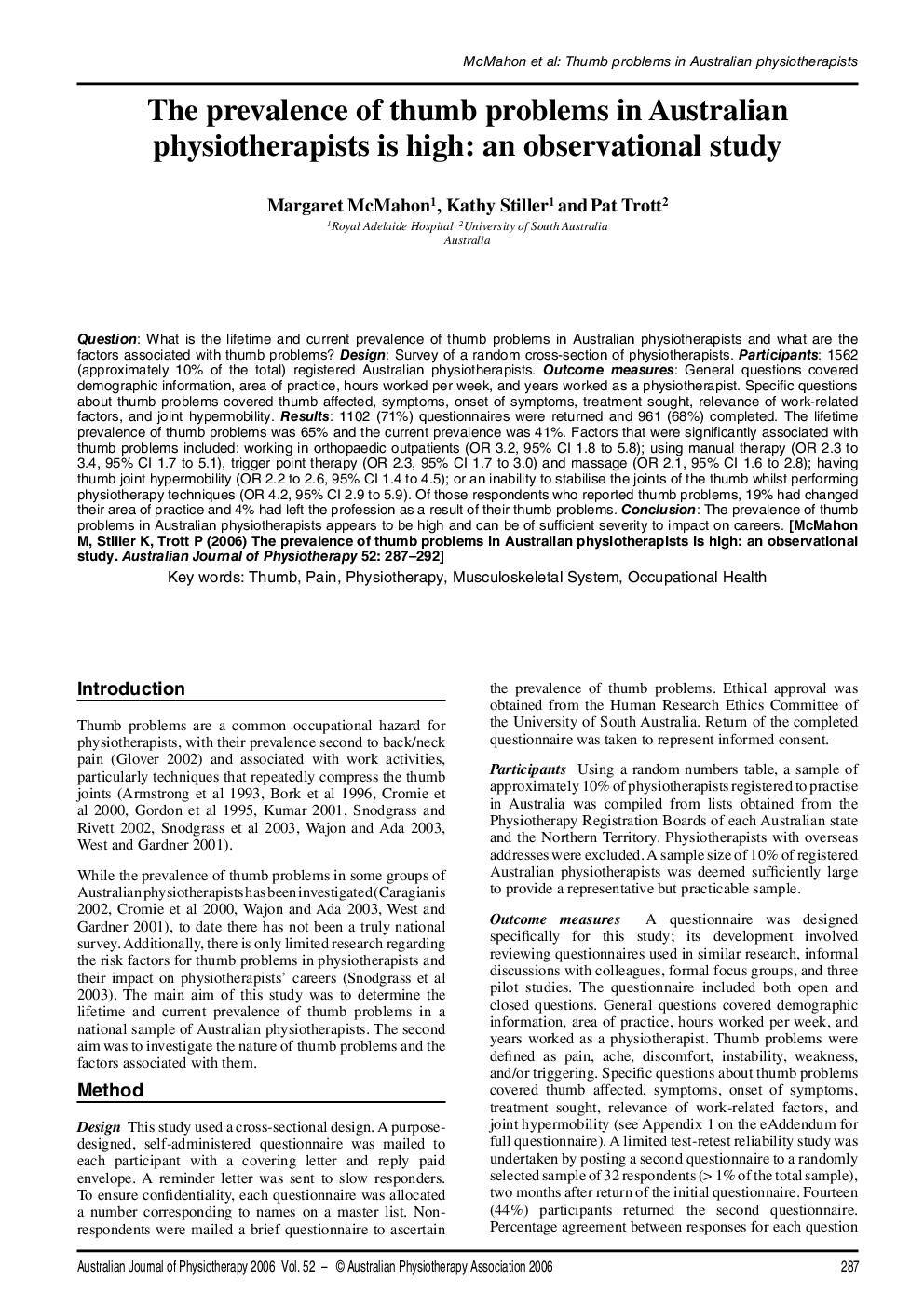| Article ID | Journal | Published Year | Pages | File Type |
|---|---|---|---|---|
| 2701218 | Australian Journal of Physiotherapy | 2006 | 6 Pages |
QuestionWhat is the lifetime and current prevalence of thumb problems in Australian physiotherapists and what are the factors associated with thumb problems?DesignSurvey of a random cross-section of physiotherapists.Participants1562 (approximately 10% of the total) registered Australian physiotherapists.Outcome measuresGeneral questions covered demographic information, area of practice, hours worked per week, and years worked as a physiotherapist. Specific questions about thumb problems covered thumb affected, symptoms, onset of symptoms, treatment sought, relevance of work-related factors, and joint hypermobility.Results1102 (71%) questionnaires were returned and 961 (68%) completed. The lifetime prevalence of thumb problems was 65% and the current prevalence was 41%. Factors that were significantly associated with thumb problems included: working in orthopaedic outpatients (OR 3.2, 95% CI 1.8 to 5.8); using manual therapy (OR 2.3 to 3.4, 95% CI 1.7 to 5.1), trigger point therapy (OR 2.3, 95% CI 1.7 to 3.0) and massage (OR 2.1, 95% CI 1.6 to 2.8); having thumb joint hypermobility (OR 2.2 to 2.6, 95% CI 1.4 to 4.5); or an inability to stabilise the joints of the thumb whilst performing physiotherapy techniques (OR 4.2, 95% CI 2.9 to 5.9). Of those respondents who reported thumb problems, 19% had changed their area of practice and 4% had left the profession as a result of their thumb problems.ConclusionThe prevalence of thumb problems in Australian physiotherapists appears to be high and can be of sufficient severity to impact on careers.
